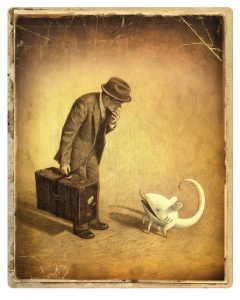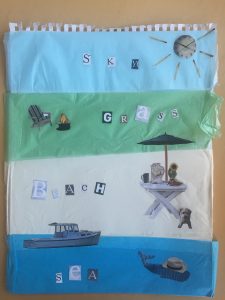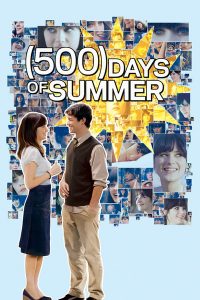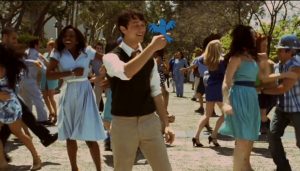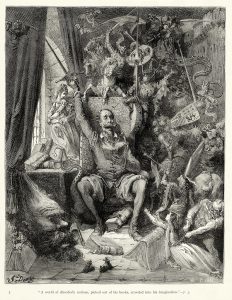The cover of “The Arrival” is a sepia tone photograph of a man (we soon learn he is an immigrant) and a creature peering up at him. This creature continues to be present throughout the majority of the graphic novel and can perhaps be interpreted as the man’s roommate. I think the use of an indiscernible creature instead of a human is an interesting choice. It illustrates that people view other cultures and races as possibly subhuman. I think that the creature in this story pokes fun at this notion and emphasizes that although strangers may seem like monsters, they are really that different.
What are other people’s interpretations of the creature? Why do you think Shaun Tan includes it? Especially on the cover of the book!

